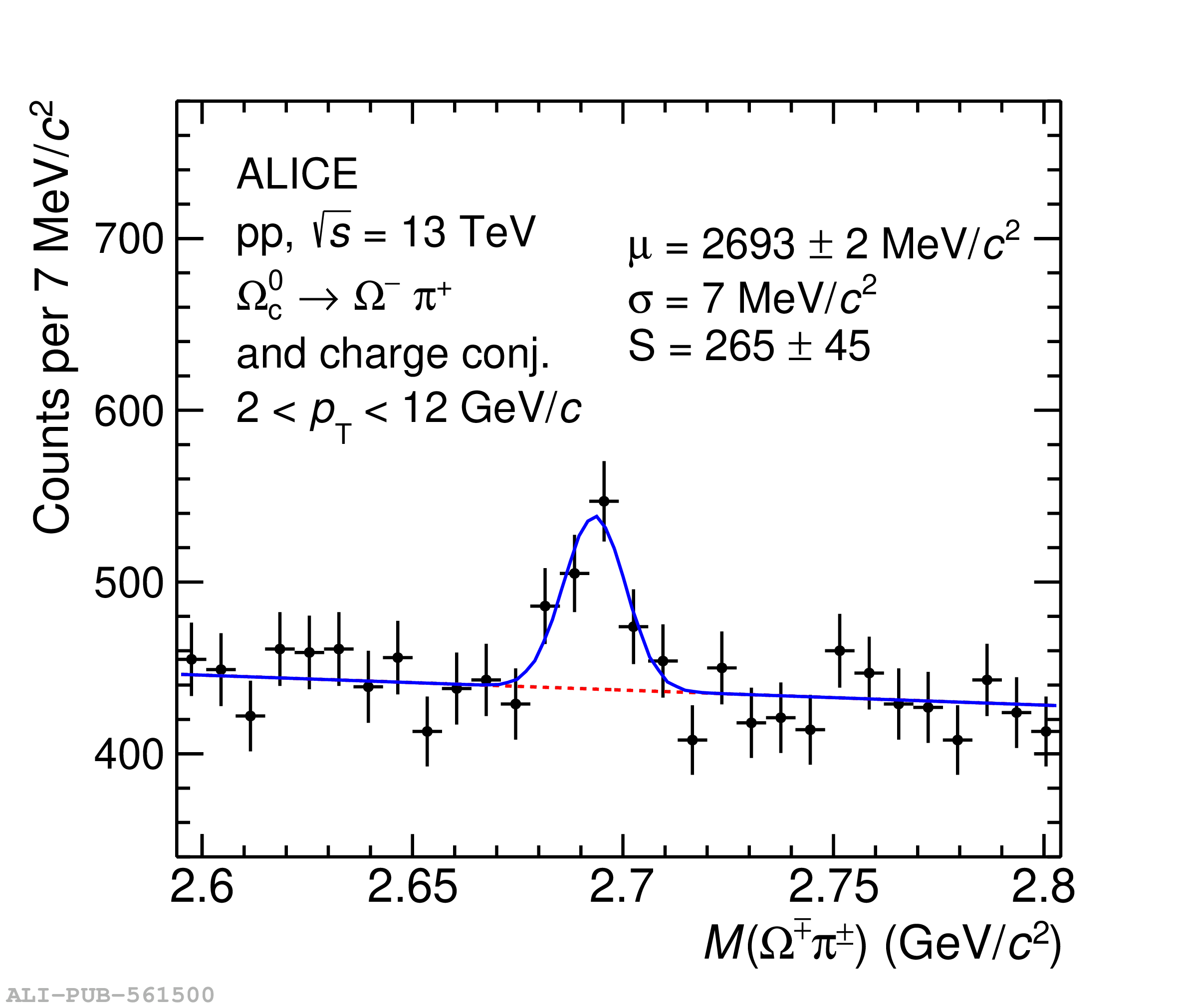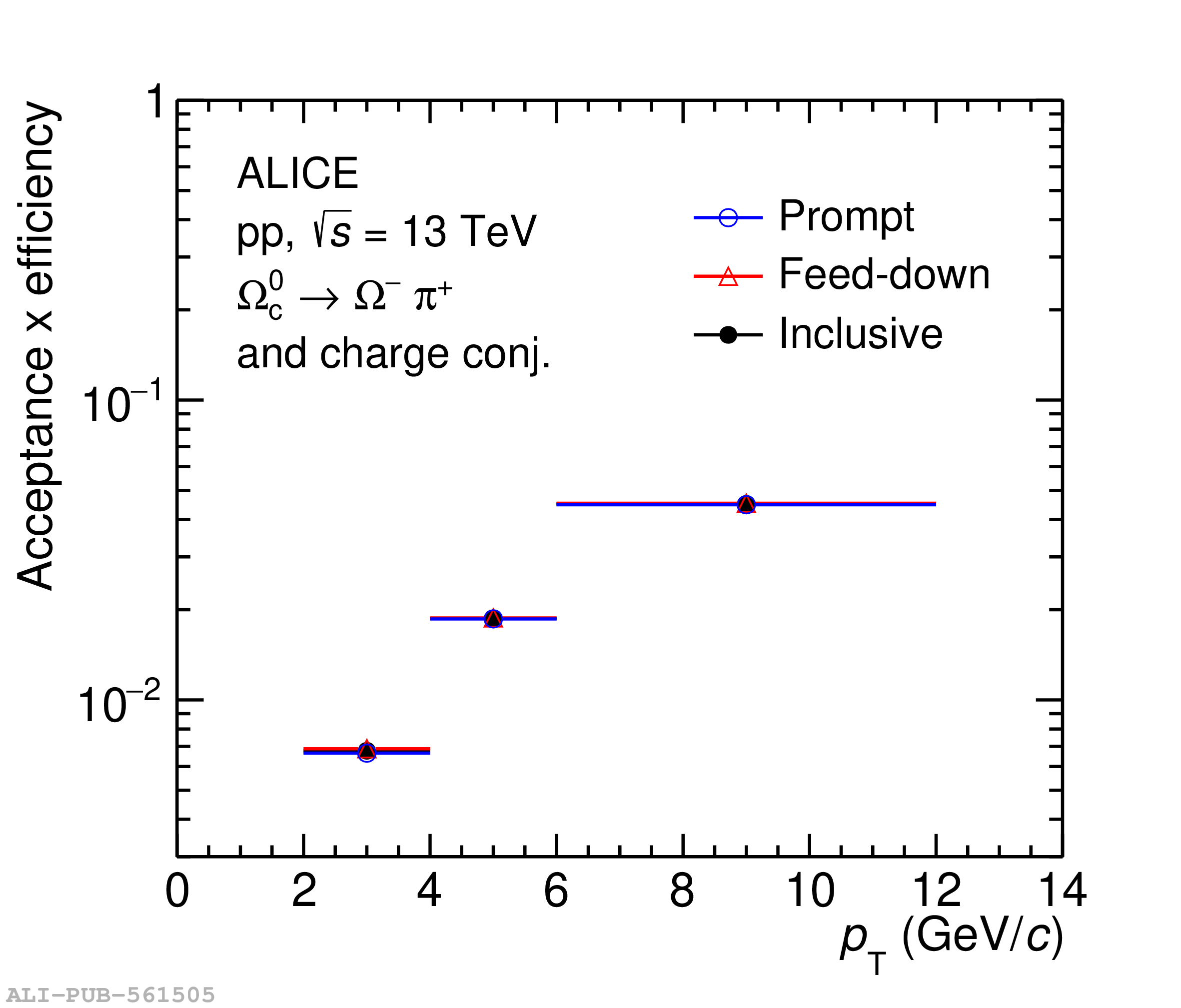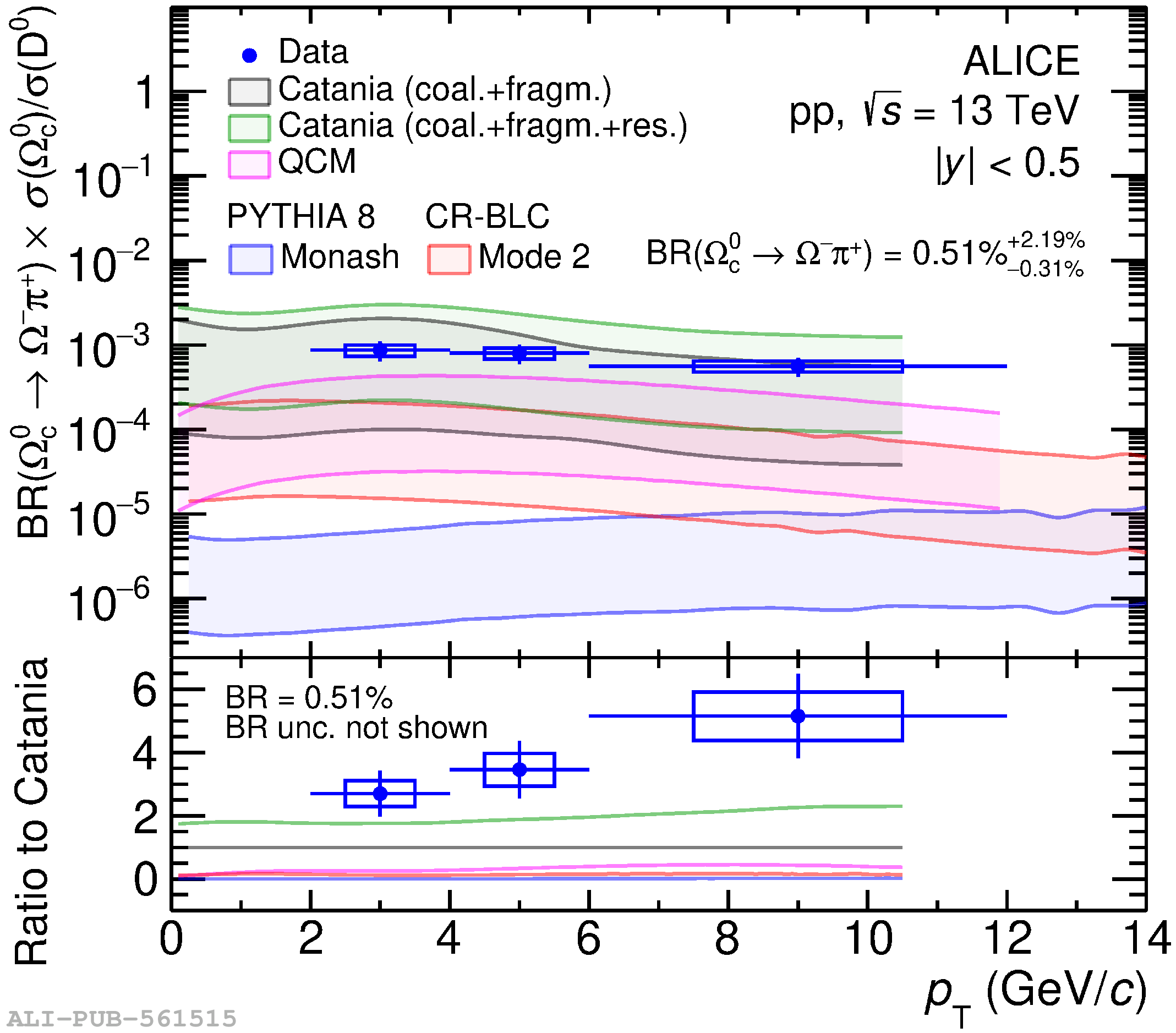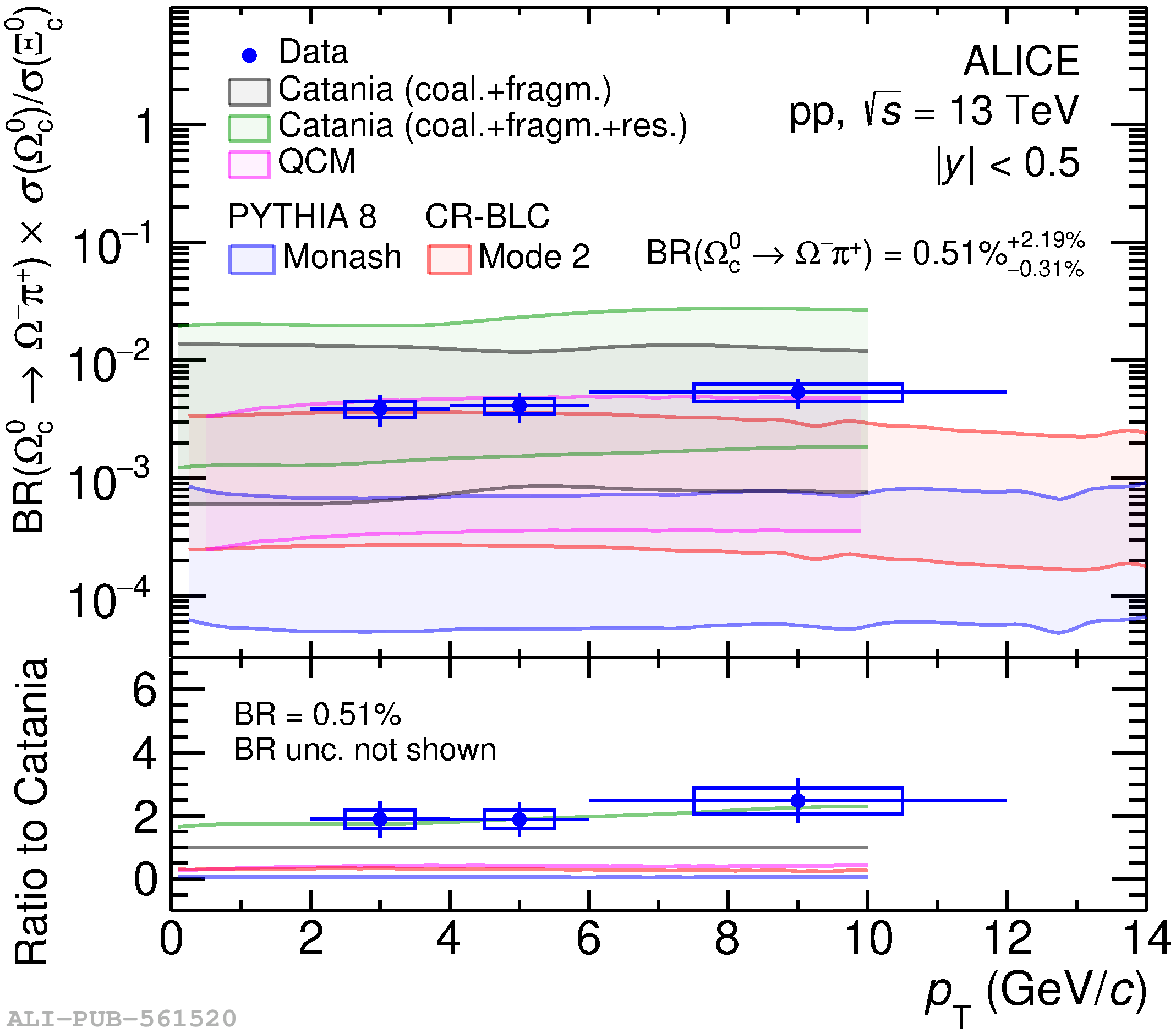The inclusive production of the charm-strange baryon $\rm \Omega_c^0$ is measured for the first time via its hadronic decay into $\rm \Omega^-\pi^+$ at midrapidity ($|y|<~0.5$) in proton-proton (pp) collisions at the centre-of-mass energy $\sqrt{s}=13$ TeV with the ALICE detector at the LHC. The transverse momentum ($p_{\rm T}$) differential cross section multiplied by the branching ratio is presented in the interval $2<~p_{\rm T}<~12~{\rm GeV}/c$. The $p_{\rm T}$ dependence of the $\rm \Omega_c^0$-baryon production relative to the prompt $\rm D^0$-meson and to the prompt $\rm \Xi_c^0$-baryon production is compared to various models that take different hadronisation mechanisms into consideration. In the measured $p_{\rm T}$ interval, the ratio of the $p_{\rm T}$-integrated cross sections of $\rm \Omega_c^0$ and prompt $\Lambda_{\rm c}^{+}$ baryons multiplied by the $\rm \Omega^-\pi^+$ branching ratio is found to be larger by a factor of about 20 with a significance of about 4$\sigma$ when compared to $\rm e^+e^-$ collisions.
Phys. Lett. B 846 (2023) 137625
HEP Data
e-Print: arXiv:2205.13993 | PDF | inSPIRE
CERN-EP-2022-106
Figure group





